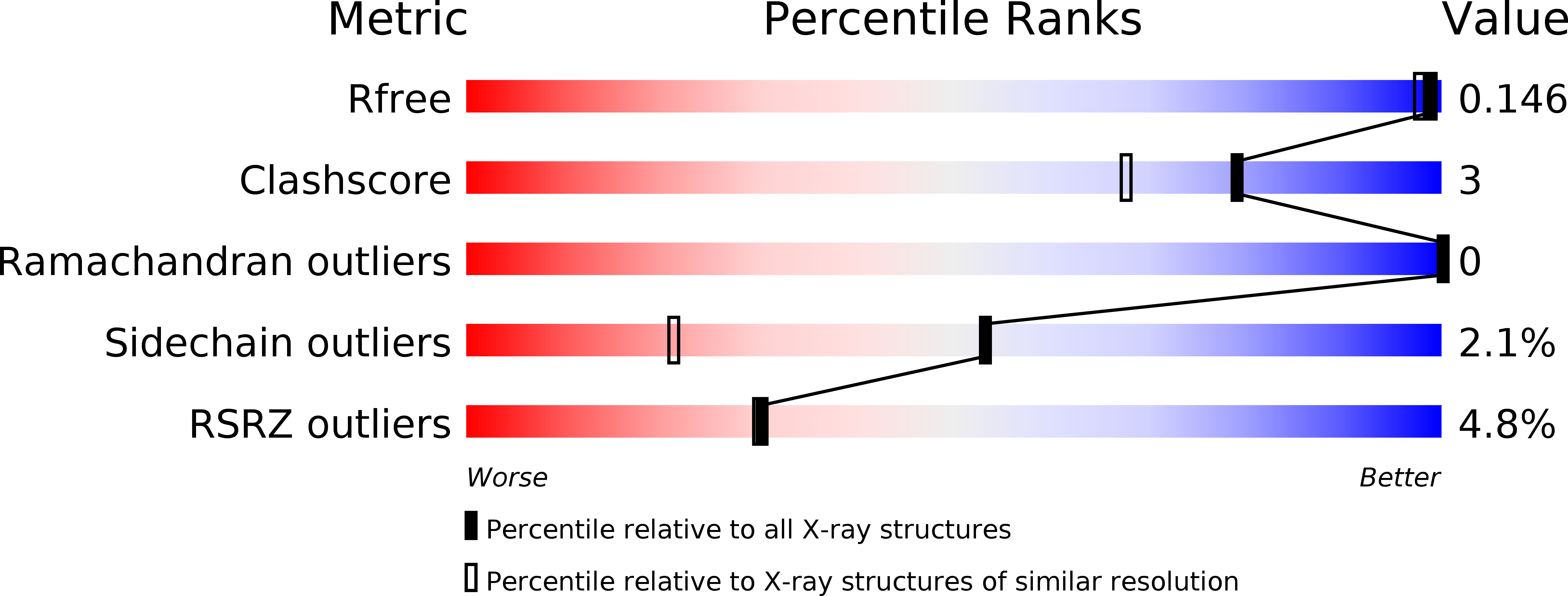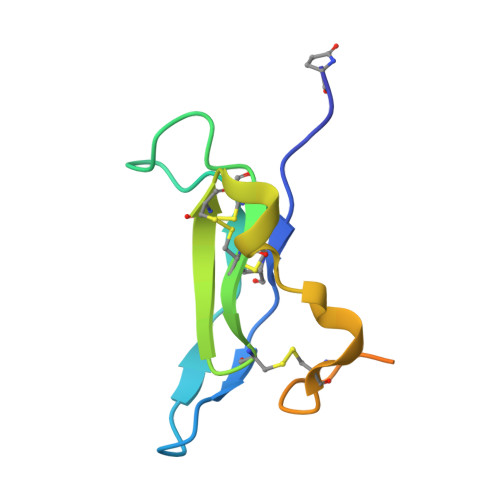Ab initio solution of macromolecular crystal structures without direct methods.
McCoy, A.J., Oeffner, R.D., Wrobel, A.G., Ojala, J.R., Tryggvason, K., Lohkamp, B., Read, R.J.(2017) Proc Natl Acad Sci U S A 114: 3637-3641
- PubMed: 28325875
- DOI: https://doi.org/10.1073/pnas.1701640114
- Primary Citation of Related Structures:
5M0W - PubMed Abstract:
The majority of macromolecular crystal structures are determined using the method of molecular replacement, in which known related structures are rotated and translated to provide an initial atomic model for the new structure. A theoretical understanding of the signal-to-noise ratio in likelihood-based molecular replacement searches has been developed to account for the influence of model quality and completeness, as well as the resolution of the diffraction data. Here we show that, contrary to current belief, molecular replacement need not be restricted to the use of models comprising a substantial fraction of the unknown structure. Instead, likelihood-based methods allow a continuum of applications depending predictably on the quality of the model and the resolution of the data. Unexpectedly, our understanding of the signal-to-noise ratio in molecular replacement leads to the finding that, with data to sufficiently high resolution, fragments as small as single atoms of elements usually found in proteins can yield ab initio solutions of macromolecular structures, including some that elude traditional direct methods.
Organizational Affiliation:
Department of Haematology, Cambridge Institute for Medical Research, University of Cambridge, Cambridge CB2 0XY, United Kingdom.




















